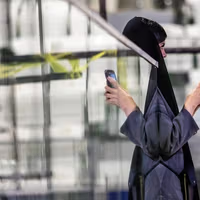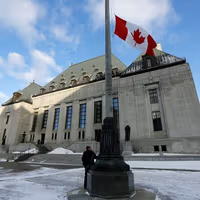Iraqi Militant Group Urges Iran's Response To Israeli Attack
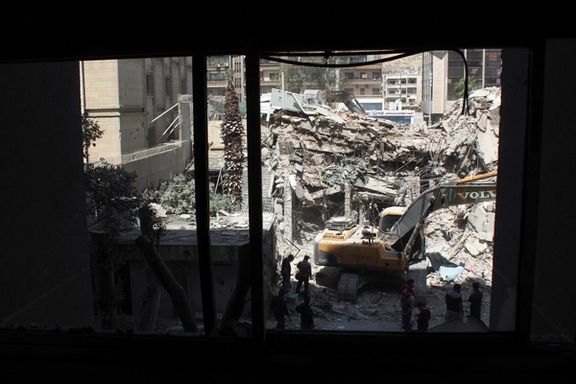
In the aftermath of the recent attack on Iran's consulate in Damascus, the representative of the Kata'ib Sayyid al-Shuhada militia in Iraq has called for a “decisive” response from Iran.

In the aftermath of the recent attack on Iran's consulate in Damascus, the representative of the Kata'ib Sayyid al-Shuhada militia in Iraq has called for a “decisive” response from Iran.
Describing the Israeli strike as tantamount to "declaring war on Iran," Hassan al-Abadi emphasized Iran's right to retaliate against Israel.
The Kata’ib Sayyid al-Shuhada (KSS) militia, an Iranian-backed Iraqi Shiite group established in May 2013, operates both in Iraq and Syria. In Iraq, it is aligned with the Popular Mobilization Forces (PMF) and fights alongside the Iraqi government and other Shiite paramilitaries against threats such as the Islamic State. Meanwhile, in Syria, KSS is allied with the Assad regime, Iran’s Islamic Revolutionary Guard Corps (IRGC), Lebanese Hezbollah, and other pro-Assad, predominantly Shiite factions battling against jihadists and anti-government forces.
The airstrike, reportedly carried out by an Israeli F-35, targeted a building within the diplomatic compound on Monday. The attack resulted in the deaths of two senior IRGC generals and five other officers. The incident is widely regarded as the most significant setback to the clerical regime and its regional aspirations since the elimination of Qasem Soleimani, the commander of the IRGC's Quds Force, in a similar US strike in Baghdad in January 2020.
In response to the attack, Supreme Leader Ali Khamenei vowed revenge on Tuesday.
With expectations high for retaliation, the Iranian regime finds itself in a delicate position. While it must respond to maintain its credibility, any direct military action risks escalating tensions into open warfare with Israel—an outcome many in Tehran want to avoid.
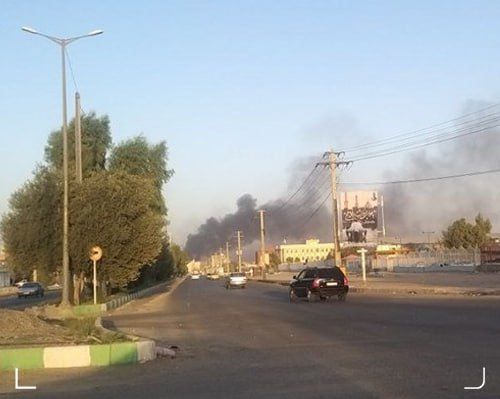
A Sunni militant group has attacked IRGC posts in southeast Iran, killing at least 11 security personnel, hours after the remains of seven officers killed in Syria were brought back to Iran.
Conflicting reports from sources on the two sides make it almost impossible to draw an accurate picture of what happened late on Wednesday local time, and the apparent continuation of clashes on Thursday. But It is clear that Iranian forces were caught off-guard and the ensuing exchange of fire lasted for several hours, likely in more than one location.
Jaish al-Adl, the militant group taking responsibility for the attacks, has a long history of targeting Iranian armed forces, especially the Revolutionary Guards (IRGC), in areas bordering Pakistan. It has been on the US foreign terrorist organization list since 2010, and has on occasion killed civilians in bombings.
Thursday morning, Iranian official sources claimed that as many as 16 militants were killed. News websites affiliated with the Revolutionary Guard announced that government casualties has increased to 11 dead, including 7 IRGC personnel. Also, there were reports that clashes still continued in some locations at daybreak.
This recent attack holds more significance than previous ones for two main reasons: firstly, it occurred shortly after Israel's airstrike in Syria, which killed seven IRGC members, including two senior commanders; and secondly, Jaish al-Adl's previous major attack in January led to a political crisis between Iran and Pakistan. This crisis ensued after Iran targeted what it claimed were militant hideouts inside Pakistan, prompting Pakistan to retaliate by hitting what it alleged were separatist Baluch positions within Iran.
It’s unclear if the regime in Tehran would react in the same manner to the attacks Thursday. Only hours before the Jaish al-Adl ambush, Iran’s Supreme Leader Ali Khamenei threatened Israel with a ‘slap’ for its killing of IRGC commanders in Syria. A similar threat, whether or not it’s followed through, could further complicate the questions facing Khamenei and his soldiers.
The last thing the Islamic Republic needs at the moment is a spat with Pakistan –or worst case scenario, a new front in its ongoing proxy wars. But turning a blind eye to this attack may not be an option either, especially since Jaish al-Adl has killed Iranian military personnel and will almost certainly do so again whenever it can. Moreover, the attack came on the eve of the annual Quds Day, much touted by Tehran. This year, officials were emphasizing the importance of the occasion to support Palestinians across the world.
On Thursday, the Sunni militants claimed they had attacked and exchanged heavy fire with Iranian forces at six IRGC and police locations. They even posted a video on the group’s Telegram channel that they said showed their fighters inside an IRGC base capturing weapons and preparing to fight.
Sources in Iran –state and IRGC affiliated– denied this, claiming to have neutralized the "attempt by terrorists”, and downplaying the significance of the attack. They first announced 5 casualties on each side, but later changed it to 3 Iranians and 12 militants.
The ‘chain operations’ targeted police and IRGC posts in the southeast cities of Chabahar and Rask, according to Jaish al-Adl. Iran's Deputy Minister of Interior Majid Mirahmadi admitted that the militants had set up ambushes along nearby roads to prevent Iranian forces from chasing them.
Shortly after, he was quoted by IRGC-affiliated sources, claiming that the militants had failed to breach the IRGC base and that the hostage in a residential building had been freed. "The terrorists experienced a total defeat," he said, while some local sources claimed some fighting was still going on.
The government in Iran considers Jaish al-Adl a terrorist organization. Officials often allege that the group has ties with US, Saudi, and Israeli intelligence agencies, and is tasked by them to whip up instability and insecurity in southeast Iran.

Despite promises in recent years by the Iranian government to import environmentally friendly cars into the country, there has been minimal to no efforts made, as the domestic car industry is mostly owned by the state.
In the last two years, for instance, not a single electric vehicle (EV) has been imported into Iran. And, since 2021, only 15,000 low-consumption cars have been imported, instead of the promised 300,000. Even fuel-efficient new vehicles or hybrid models have not been imported.
In 2017, Iran instituted a ban on car imports, citing the imperative of conserving foreign exchange reserves. The ban was allegedly implemented as a measure to reduce spending on imported vehicles and safeguard the country's currency holdings.
Iran's domestic car manufacturers, owned by the government and its affiliates, meanwhile, produced approximately 1.2 million vehicles in 2023, all of which were gasoline powered.
Iran International's calculations suggest that the cost of charging an electric vehicle (EV) in Iran would amount to only one-fourth of the price of gasoline purchased at the government-set quota prices.
This is notable, as Iran has been grappling with a gasoline deficit since mid-2022, prompting the initiation of fuel imports – pushing the country's annual gasoline subsidies to over $10 billion.
And yet, despite the rapid growth of the global electric vehicle market, the Iranian government has shown no regard or desire to import electric vehicles.
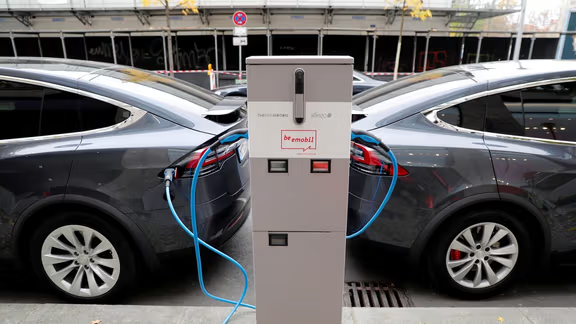
Global EV markets and energy costs
In 2023, the global electric vehicle market witnessed a staggering 37% surge, capturing nearly 15% of the total automotive market share worldwide.
By 2030, it is anticipated that two-thirds of new car sales in the market will be EVs.
Currently, there are about 27 million electric cars on the world's roads, and their electricity consumption is about 110 to 120 terawatt hours per year (TWh/yr).
Today, there are 16 million cars in Iran, mostly domestically produced, that consume 110 million liters of gasoline per day. These are based on older foreign models with inefficient engines and high pollution.
Thus, if Iran imports even one million electric cars, their electricity consumption will be about 4 TWh/yr, which is equivalent to approximately 1% of the country’s electricity generation.
Meanwhile, Iran is facing both a shortage of gasoline and severe air pollution.
A significant part of air pollution in the country is due to its domestically produced cars, consuming much higher fuel levels at 16 liters/100 km – almost two times more than global standards.
On the other hand, only less than a quarter of the domestically produced gasoline in Iran meets Euro 5 and Euro 6 standards.
Iranian cars also consume 20 million cubic meters of compressed natural gas (CNG) daily.
According to the International Energy Agency, Iran had about $50 billion hidden subsidies for oil products, $45 billion for natural gas, and $30 billion for electricity in 2022.
In a simple word, the difference between the domestic and foreign sales prices of Iran's oil products, gas and electricity was about $125 billion in 2022, which is equivalent to one third of the country's GDP.
Gasoline has a 25% share in the output of Iranian refineries. Then, Iran had about $12.5 billion hidden gasoline subsidies in 2022.
If Iran were to import 1 million cars – barring extra costs for infrastructure build-up – the hidden subsidy for their electricity demand will be only $300 million annually.
EV vs. Gasoline in Iran
On April 1, Mustafa Rajabi Mashhadi, the CEO of Iran’s state electricity company, announced that the energy ministry plans to build eight electric car charging stations in Tehran. But, the electricity price would be determined using higher commercial rates, at 5,470 rials (less than 1 cent) per kilowatt-hour.
As of now, there have been no reports published regarding the commencement of construction for these stations.
Furthermore, the rationale behind Iran's decision to calculate electricity prices for electric cars at commercial rates remains unclear, especially considering the substantial subsidy provided for gasoline.
Nonetheless, potential future electric car owners in Iran, could still expect to incur significantly lower energy costs compared to gasoline-powered vehicles.
At the current rate, an electric car consumes an average of 0.2 kilowatt-hours of electricity per kilometer – so, the cost of driving an electric car for 100 kilometers in Iran, would cost about 18 cents.
The cost of fuel for every 100 kilometers of driving with free gasoline is about 80 cents, and with quota gasoline, it is half of this figure.
Hence, using an electric car would be much more economical than a gasoline car, in Iran.
Government resistance due to state-owned monopoly
The true reason for the government's reluctance to import cars appears to stem from the fact that approximately 80% of domestic cars are manufactured by state-owned car companies.
As a result of the monopoly held by state-owned companies in the car market, Iranians are compelled to purchase low-quality, expensive vehicles with high gasoline consumption.
Saeed Tajik, CEO of Iran Quality and Standard Inspection Company, stated to the Economics Online website on April 1 that Iran's Ministry of Industry, Mines, and Trade has expressed interest in importing electric cars. However, the Ministry of Energy has raised concerns regarding this proposal due to the electricity deficit.
During the summer months, Iran faces a 14,000 MW electricity deficit, while there is no deficit during other seasons.
Furthermore, Iran boasted approximately 2.5 TWh of net electricity exports valued at around $300 million in 2023, an amount capable of meeting the energy requirements of 625,000 electric cars each year.
Iran's current electricity production stands at approximately 390 TWh, yet 13% of this (over 50 TWh) is lost due to the deterioration of the electricity transmission network. Tajik also emphasized that the reality is Iran lacks the necessary infrastructure for electric cars.
To justify the import ban on electric vehicles, he also cited the fact that the electricity produced in Iran is not environmentally friendly. Approximately 80% of Iran’s electricity generation is derived from thermal power plants, which burn large quantities of gas, mazut, and diesel.
According to official statistics from the Energy Ministry, over 94% of electricity generation in the country originated from thermal power plants in the last fiscal year, which ended on March 19. Despite government projections to add 2,500 MW of renewable energy capacity during the same period, only 75 MW of the planned capacity was realized, accounting for less than 3% of the intended target.
President Ebrahim Raisi’s government, meanwhile, claims to have projected the installation of 4,500 MW of new solar and wind farms in the current year.

The insurgent Sunni Baluch group Jaish al-Adl on Thursday launched simultaneous attacks against military posts in southeastern Iran, which left at least 11 security forces dead.
The simultaneous attacks claimed by Jaish al-Adl targeted law enforcement headquarters in Chabahar, belonging to Iran's Border Guards, and the Revolutionary Guard's base in Rask, both in the restive Sistan and Baluchestan province, Iran's Deputy Minister of Interior Majid Mirahmadi told the IRGC-affiliated Fars News early Thursday.
Iran’s official news agency IRNA initially said five members of security forces including an IRGC officer, a Basij paramilitary force, a conscript and two police forces were killed by the assailants. However, the numbers were revised upwards by noon on Friday to 11 security personnel killed, including seven Revolutionary Guards.
Five militants were also killed in clashes with security forces, IRNA reported.
Mirahmadi said militants had set up ambushes along the nearby roads to prevent security forces from chasing them.
In Rask, Mirahmadi said, the militants "failed to breach the Revolutionary Guards' base thanks to the resistance of our forces."
"One of the terrorists was killed, and the clashes continue, with terrorist forces also under siege," he said, calling the incident an "act of terrorism".
He said one militant was also killed in Chabahar and several others were wounded, but clashes were still under way early Thursday.
Jaish al-Adl has carried out dozens of large and small operations over the years against Iranian military forces, particularly the IRGC, including cross-border attacks and abduction of border guards and security personnel as well as bombings leading to the killing of civilians.
In January, Jaish al-Adl claimed responsibility for targeting an IRGC vehicle carrying officers near the city of Iranshahr in Iran's restive Sistan and Baluchestan Province.
Two days earlier the group had taken responsibility for an attack on an IRGC base in Saravan and claimed a sentry had been shot.
Iran’s IRGC, in turn, targeted Jaish al-Adl's positions in Pakistan's Balochistan province, while Pakistan retaliated by bombing hideouts of armed Baloch separatists in Iran's Sistan-Baluchestan province.
The strikes led to a rapid deterioration in diplomatic relations between Islamabad and Tehran, with both countries withdrawing ambassadors and severing official ties amid heightened rhetoric.
Jaish al-Adl has been designated as a terrorist organization by Iran, whose officials often refer to it as Jaish al-Zulm (Army of Injustice) and “Takfiri terrorists.” The United States put the group on its foreign terrorist organizations list in 2010.
Iranian officials often allege that the group has ties with US, Saudi, and Israeli intelligence agencies and is funded by them.
Jaish al-Adl was founded by Abdul Rahim Mollazehi, a Baluch militant, in 2012 by reorganizing Jundullah (Army of God), also known as the People’s Resistance of Iran.
Updated at 8:30 GMT, April 4
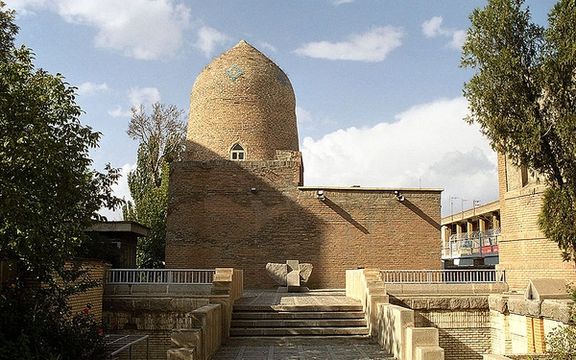
A newly released video depicts Molotov cocktails being thrown on the ancient mausoleum of Esther and Mordechai in Hamadan during the early hours of Tuesday, a key archaeological site in both Jewish and Christian history.
The assailants used incendiary materials, causing a fire at the tomb complex, raising concerns about the safety of not only the historic sites but the country’s Jewish community, the largest in the Middle East outside Israel amidst the world’s worst antisemitism since the Holocaust. Around 10,000 Jews remain in Iran, one of the most ancient communities in Jewish heritage. They have long lived under the pressure of Iran’s shadow war with Israel, the world’s only Jewish state and archenemy of Iran.
The governor of Hamadan claimed that through surveillance footage, the perpetrators have been identified though it remains unclear who was behind the attack.
The tomb of Esther and Mordechai holds significant religious and cultural importance, being the burial place of the Jewish wife of King Xerxes and a key pilgrimage site for Jews and Christians both within Iran and around the world. It is registered as one of Iran's cultural heritage sites.
Social media has been abuzz with various interpretations of the attack. Many users speculate that the Iranian regime and its supporters may be behind the incident, viewing it as a form of retaliation for recent tensions with Israel including an alleged strike on the Iranian consulate in Syria.
Some have taken a sarcastic tone, mocking the incident as the "tough revenge" for the consulate attack. They have criticized the destruction of national heritage as a misguided attempt by the regime to express anger towards Israel.
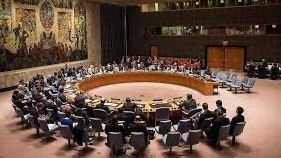
The United States, Britain and France on Wednesday opposed a Russian-drafted UN Security Council statement that would have condemned an attack on Iran's embassy in Syria, which Tehran has blamed on Israel.
Press statements by the 15-member council have to be agreed by consensus. Diplomats said the US, backed by France and Britain, told council colleagues that many of the facts of what happened on Monday in Damascus remained unclear and there was no consensus among council members during a meeting on Tuesday.
"This serves as a clear illustration of the double standards employed by the Western 'troika' and their actual, rather than declarative, approach to legality and order in the international context," Russia's deputy UN Ambassador Dmitry Polyanskiy said in a post on X.
In the previous Security Council meeting on Tuesday, the US representative condemned the activities of Iran’s armed proxy groups in the region, as well as warned Tehran not to target US forces in retaliation for the attack on its Damascus embassy.
The UN Security Council has issued statements in the past condemning attacks on diplomatic premises. The European Union on Wednesday condemned the strike - saying the inviolability of diplomatic and consular premises and personnel must be respected - and called on countries to show restraint.
The US says it has not confirmed the status of the building struck in Damascus, but that it would be concerned if it was a diplomatic facility.
Israel has not claimed responsibility for the attack, which destroyed a consular building adjacent to the main embassy complex, killing seven members of Iran's Revolutionary Guards.
Iran has accused Israel of violating the founding UN Charter, international law, and also cited several conventions. However the Islamic Republic has violated the immunity of foreign embassies several times in the past 45 years, with allowing its supporters to occupy the US embassy for 444 days as well as attack and damage the British and Saudi embassies.
The 1961 Vienna Convention governing diplomatic relations and 1963 Vienna Convention on Consular Relations define premises as buildings, parts of buildings and land - regardless of ownership - used for the purposes of the diplomatic or consular mission, including the head of the diplomatic mission.
Those conventions state that the diplomatic or consular premises "shall be inviolable." But they also say the premises should "not be used in any manner incompatible" with the diplomatic and consular functions.
Iran also cited the 1973 Convention on the Prevention and Punishment of Crimes Against Internationally Protected Persons, including Diplomatic Agents - suggesting those killed were covered by these rules.
With reporting by Reuters



